Gypsum, dolomitic, lime, sulfates vs. buffers and anti-fungal agents
strawchicago z5
8 years ago
last modified: 8 years ago
Featured Answer
Sort by:Oldest
Comments (12)
strawchicago z5
8 years agolast modified: 8 years agoRelated Discussions
Experiments on health of plants, flowering, and fungal diseases
Comments (55)Week-long of humid weather, it rained today. I checked my 3 rooting-areas: In Smart-Pot with MG-potting soil, and in potting soil plus coarse sand, and in acidic pine-fines potting soil with mint-pureed (previous pic), the mint pureed have zero blackspots, but the other rootings either become yellow, or blackspotted after 8 days. Mint-pureed with salicylic acid caused wilting in the vase (no buffer, just acidic rain-water), but the mint-pureed WITH SOIL AS BUFFER is fantastic for rooting. See excerpt from below link: http://www.bluestem.ca/willow-article1.htm " Thomas Powell notes that gardeners reported all sorts of plants growing remarkably better when given regular doses of tiny amounts of aspirin (1 part to 10,000 parts water; larger doses actually proved toxic),” Plants make salicylic acid to trigger natural defenses against bacteria, fungi, and viruses. Aspirin thus is an activator of ‘Systemic Acquired Resistance’ (SAR). However, plants often don’t produce the acid quickly enough to prevent injury when attacked by a microbe. Spraying aspirin on the plants speeds up the SAR response. Tests have shown this works on many crops, producing better plants using less pesticide. They’re also testing aspirin and other SAR activators which could be effective against non-microbial pests such as aphids and root-knot nematodes,” Powell says. “This may be the most important research of the century. Stimulating SAR defenses with aspirin or other activator compounds could result in increased food production and the elimination of synthetic pesticides.” He recommends we experiment by spraying some plants with a 1:10,000 solution (3 aspirins dissolved in 4 gallons of water), leaving other plants unsprayed. Tests have shown that the SAR activation lasts for weeks to months." *** From Straw: Let's see how long my rootings in mint pureed stay clean. Mint has salicylic like aspirin and willow-rooting-hormone. Another German reserach showed that Salicylic acid also help plants to tolerate salt-injury better: http://www.ncbi.nlm.nih.gov/pubmed/21143731 " Salicylic acid treatment via the rooting medium interferes with stomatal response, CO2 fixation rate and carbohydrate metabolism in tomato, and decreases harmful effects of subsequent salt stress."...See MoreRock, Herbs, azomite, kelp, crack-corn for flower & disease resistance
Comments (226)@strawchicago z5 Straw, I will get some pictures later today of my Jubilee's. We had torrential rains all yesterday and last night, so all of my plants are a little heavy right now including all the rose flowers that are blooming ;( Once they dry off and perk up from being so close to the ground I'll try to get some pictures, The 2 I have are looking really beautiful though with big fluffy magenta flowers. I took time to smell them all this morning for you. I'm not the best with scent descriptions, but I wanted to try for you- Olivia Austin rose- not very strong scent....can't comment Imogen - typical rose scent (to me) Carding Mill - Beautiful scent, fruity, almost tropical but not too fruity like my Westerlands. Jubilee Celebration - I really like this smell now that I got up close to them to sniff the flowers. It is fruity like Carding Mill, but with a strong kind of lemon zest scent to it. Lemon zest might not sound good, but this is my favorite smell of all the Austin's so far I think. If someone told me a flower smelled strongly like lemon zest, I probably wouldn't love the idea. So maybe that's not the best description of it but I'll try it again later and see if I can come up with a better description. I'm going to order some more of the rose though, I really like it :)...See MorePictures of plants & roses in pH 8 alkaline clay in July and onwards
Comments (48)Kordes Flower Carpet survived my zone 5a winter better than Knock-out. Zero diseases for the past 16 years. Didn't fertilize nor water it for over a decade. Peggy Rockefeller Rose Garden in NY rated the top 115 no-spray & disease-resistant roses by score. Quietness came 3nd place, after Belinda's Dream at 8.6. Quietness got the second best score of 8.55, higher than single-Knock-out at 8. Julia Child gets a score of 8.3. Austin Heritage gets a score of 8.8. Alkaline clay folks complained that Heritage is stingy, due less acid-phosphatase. Roots secrete acid to utilize phosphorus in soil for blooming. Too much of that ends up with fungal diseases. http://www.nybg.org/gardens/rose-garden-top-performers-2010.php If you click on the link above, it ranked the most disease & no-spray roses by a score. Knock-out scores at 8, while many Kordes roses are at 8.3 and above. Kordes roses have vigorous root system, mean better winter-survival and perfect foliage. HybridizerVariety (Sorted Alphabetically)Overall ScoreAlexander Hill GrayAlister Stella Gray7.75LimAll the Rage8.15KordesAmadeus®7.90MeillandApricot Drift®8.10BayseBelinda's Dream8.60PriorBetty Prior8.15UnknownBlush Noisette8.00RadlerBlushing Knock Out®8.10MeillandBolero™ 20048.50MeillandBonica™®8.00ClarkBorderer7.75LensBouquet Parfait®7.91BedardCape Diamond®7.85KordesCaramella®7.85AustinCarding Mill®8.50BuckCarefree Beauty™8.25MeillandCarefree Delight™7.75RadlerCarefree Spirit™7.95LimCentennial7.85MeillandCherry Parfait™8.50KordesCinderella Fairy Tale8.50MeillandColette™8.00MeillandCoral Drift™8.40KordesCream Veranda8.75FoundDarlow's Enigma9.00LimDaydream7.90KordesDesmond Tutu8.25RadlerDouble Knock Out®9.10DucherDucher8.25BernèdeDuchesse de Brabant8.25MeillandEaster Basket™9.25HarknessEasy Does It™7.85KordesEiffel Tower8.25KordesEliza®8.00KordesEscimo™8.00MeillandEternal Flame™8.40ShoupF.J. Lindheimer8.40KordesFelicitas8.00KordesFloral Fairy Tale8.00LesterFrancis E. Lester8.00KordesGardening Joy8.25KordesGebrϋder Grimm® (Brothers Grimm)8.50KordesGolden Fairy Tale™8.00AustinHeritage®8.80CarruthHome Run™8.10KordesJasmina®8.35WilliamsJoe Grey™8.10CarruthJulia Child™8.35KordesKarl Ploberger7.85RadlerKnock Out®8.00KordesKordes Golden Gate™8.00KordesKordes Moonlight®8.75KordesKosmos9.00BarbierLa Marne8.15KordesLa Perla8.00NoackLady Elsie May™8.00ShoupLady Pamela Carol8.00KordesLaguna®8.30KordesLarissa8.50ZuzekLena7.90KordesLions-Rose®7.60KordesLupo®8.00LimMacy's Pride8.95DesprezMarchesa Boccella8.25SportMarie Daly7.85AlégatièreMarie Pavié7.85KordesMarie-Luise Marjan®8.40CarruthMemorial Day™8.25DelbardMichel Bras8.25MeillandMother of Pearl™8.70UnknownMutabilis8.25LimMy Girl7.85PissardNastarana7.85ShoupOld Baylor8.45ZuzekOle7.85MeillandOso Easy Cherry Pie8.50WarnerOso Easy Fragrant Spreader8.00MeillandPeach Drift®9.00FoundPeggy Martin 'Survivor'8.75RadlerPink Double Knock Out®9.00MeillandPink Drift®8.75CarruthPink Home Run®7.15RadlerPink Knock Out®8.10MeillandPink Traviata™8.40KordesPlanten un Blomen8.40KordesPomponella™8.00LensPorcelaine de Chine8.00PembertonProsperity7.50KordesPurple Rain8.65BuckQuietness8.55RadlerRainbow Knock Out®8.00ShoupRepublic of Texas8.00KordesRosanna®7.85KordesRosarium Uetersen®8.05UnknownRose de Rescht7.25KordesRoxy™8.50HolmesSally Holmes®8.45BarniSans Souci7.85AustinScepter'd Isle7.80KordesSolero™7.80AustinSophy's Rose8.75AustinSpirit of Freedom8.75LeeStanwell Perpetual7.85BarniStile '800®8.20KordesSummer Memories™8.00KordesSummerSun8.00RadlerSunny Knock Out®8.50MeillandSweet Drift®8.00MeillandTequila™7.90DemitsThe Gift7.95BugnetThérèse Bugnet8.15MeillandTraviata™8.65RadlerWhite Out®8.65RadlerWinner's Circle™7.90KordesZadie8.10 Below is my Kordes FlowerCarpet, pic. taken late August. I didn't fertilizer nor water it for over a decade .. actually did better that way:...See MoreTrace elements for blooming and antifungal agents against diseases
Comments (21)http://www.sciencedirect.com/science/article/pii/S0038071706005190 Trace and nutrient elements in manure, dung and compost samples in Austria Although the high amounts of K and P were beneficial, there were some high concentrations of Na in biogas residues and pig manures. Intense additions of Cu, Zn, and Se are reflected in high loads in the respective excrements, as Austria is a low Se area. Composts and sewage sludges were higher in Al and lithophilic trace elements than were the excrements ... Factor analysis traced phosphates as the main source of Cd. Cr in processed matrices was significantly higher, and abrasion from tools should be considered in future investigations" *** From Straw: antifungal trace elements, listed in the order of most potent: Silver, Mercury, Copper Cu, Cadmium Cd, Chromium Cr, Nickel, Lead, Cobalt, Zinc Zn, Iron, and lastly calcium. Selenium is also a strong anti-fungal agent. My personal experience for the past 6 years: horse manure and chicken manure together works better than applying lime before acidic rain. Have really bad experience testing Encap compost on pots, due to the quick lime. Aluminum is toxic to plants (Milorganite sewage sludge was bad for both my lawn and roses), and I'm glad that chicken manure is high in zinc, copper, and boron. http://www.ontariosoilcrop.org/wp-content/uploads/2015/07/V2Gen1.pdf "Zinc and Copper are included in monograstric (swine and poultry) diets at much higher levels than minimum requirement for "normal" performance since when fed at higher levels they promote growth. Horse manure samples in the study were particularly high in chromium, nickel, aluminum and iron. The source of nickel and chromium is not clear, but race harness bits used in the industry are often nickel or chrome plated and may have contributed to the concentration of these two metals. " I also checked for trace elements in oyster shell lime: https://www.researchgate.net/publication/18465435_Trace_Metals_in_Oyster_Shells " Measurements using atomic absorption spectrometry have established the prescence of Pb, Hg, Cd, Zn, Cu, and Cr in shells of the oyster Crassostrea virginica in amounts considerably higher than their concentration in sea water." BOS LIME is made from Ocean Shell, (Bluff Oyster Shell / Kina Shell). Trace elements and micro minerals such as Potassium Oxide, Magnesium Oxide, Colbalt, Zinc Oxide ." http://www.boslime.co.nz/pages/products_001.html...See Morestrawchicago z5
8 years agolast modified: 8 years agostrawchicago z5
8 years agolast modified: 8 years agostrawchicago z5
8 years agostrawchicago z5
8 years agolast modified: 8 years agostrawchicago z5
8 years agolast modified: 8 years agostrawchicago z5
8 years agolast modified: 8 years agojim1961 / Central Pennsylvania / Zone 6
8 years agomsdorkgirl
8 years agostrawchicago z5
8 years agojim1961 / Central Pennsylvania / Zone 6
8 years ago
Related Stories

PAINTINGWhat to Know About Milk Paint and Chalk Paint — and How to Use Them
Learn the pros, cons, cost and more for these two easy-to-use paints that are great for giving furniture a vintage look
Full Story



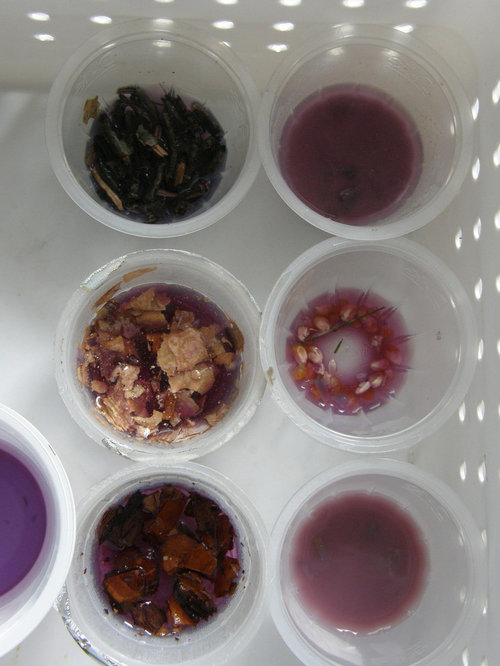
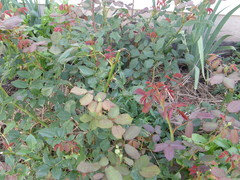

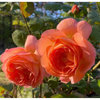
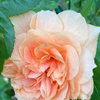
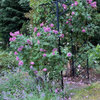
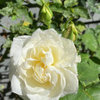
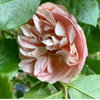
strawchicago z5Original Author